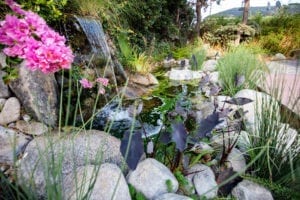A vibrant, thriving garden can be a source of joy and beauty, but maintaining it can be a challenge, especially in regions prone to drought. However, with careful planning and the right selection of plants, you can create a stunning garden that conserves water and thrives even in dry conditions. By incorporating drought-tolerant plants, you can ensure that your garden remains lush and vibrant, even during periods of water scarcity.
Here’s a comprehensive guide to help you create a stunning garden with drought-tolerant plants:
1. Assess Your Climate and Soil
- Begin by understanding your local climate and soil type. Different regions have varying levels of rainfall and humidity, which can significantly impact plant selection and care.
- Evaluate the type of soil in your garden. Drought-tolerant plants typically thrive in well-draining soil, so if your soil is clay-heavy, consider amending it with organic matter to improve drainage.
2. Choose the Right Plants
- Opt for native plants and those that are well-adapted to your specific climate. Native plants are more likely to be naturally suited to the local environment and require less water and maintenance.
- Select plants with characteristics such as deep roots, waxy or silver foliage, or succulent leaves, as these features often indicate a plant’s ability to withstand drought conditions.
- Consider low-maintenance perennials, shrubs, and grasses that require minimal watering once established, such as lavender, yarrow, sage, agave, and ornamental grasses.
3. Plan Your Garden Layout
- Design your garden layout to optimize water conservation. Group plants with similar water needs together to create hydrozones, which will help you efficiently manage irrigation.
- Incorporate mulch to retain soil moisture and prevent weed growth. Organic mulches like wood chips or bark can also improve soil quality over time.
4. Implement Water-Saving Techniques
- Consider installing a drip irrigation system that delivers water directly to the base of plants, minimizing water loss through evaporation and runoff.
- Collect rainwater in barrels or tanks to use for watering during dry periods. This sustainable practice can significantly reduce your reliance on traditional water sources.

5. Maintain Proper Care
- Regularly inspect your garden for signs of stress or pest infestations, as drought-stressed plants can be more susceptible to diseases and pests.
- Prune and deadhead regularly to encourage new growth and maintain the overall health and appearance of your garden.
- Monitor soil moisture levels and water your plants deeply and infrequently to encourage deep root growth and resilience to drought conditions.

6. Incorporate Aesthetic Features
- Integrate hardscaping elements, such as pathways, rock gardens, or decorative boulders, to add visual interest and structure to your garden while reducing the need for water-dependent features.
- Include a variety of textures, heights, and colors in your plant selection to create a visually appealing and dynamic landscape that thrives in dry conditions.

7. Educate Yourself
- Stay informed about local water regulations and restrictions, and familiarize yourself with efficient water-saving practices and technologies that can help you maintain a lush garden while conserving water.
- Join gardening communities or local horticultural groups to exchange knowledge and experiences with other gardeners who share your passion for creating beautiful, water-efficient landscapes.

By following these guidelines, you can create a stunning and resilient home garden that not only withstands drought but also contributes to the conservation of water. With careful plant selection, thoughtful garden design, and efficient water management, you can enjoy a lush and vibrant outdoor space, even in the face of challenging environmental conditions.
To explore more ideas, visit Backyard Gardening: A Step-by-Step Approach.






